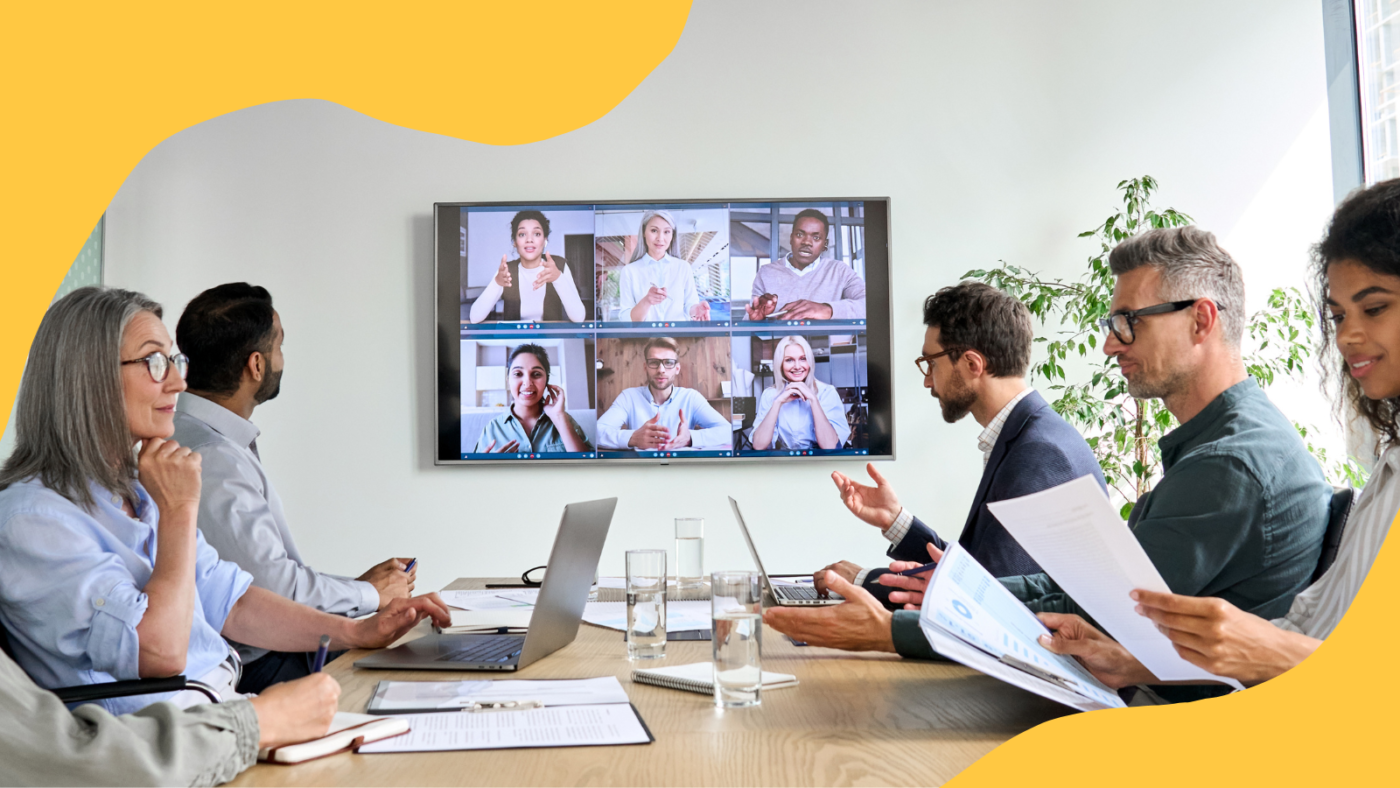We recently covered the nuances of leading remote, hybrid and in-person teams, and the different approaches required for each. This post will share the specific skills needed for successful leadership throughout these various models.
Technological Know-How
Gone are the days when all meetings take place face to face, and even in-person teams occasionally need to interface with a remote team or a client from across the county via WebEx or Zoom. Therefore, it’s non-negotiable today for remote, hybrid and in-person teams to master remote communication tools.
Communications expert Nick Morgan gave the following tips in his book Can You Hear Me: How to Connect with People in the Virtual World and during his guest appearance on the Business of Intuition Podcast:
- Set up a virtual meeting studio in your home or office with a microphone, lighting, and virtual background.
- Stand, don’t sit, during virtual meetings; your energy will be much higher.
- Move away from the camera so your audience can see your torso and hand gestures. (Nick mentions something called “Pre-perception,” the subconscious mind’s ability to perceive where the body is in relation to other people and objects. Being too close to a camera sends subconscious warning signals that you are in that person’s personal space. This is what causes “Zoom fatigue.”)
- Get to know and use your company’s instant messaging and project management tools like Slack and Employee Operating System (EOS).
Skills for Leading Remote Teams
In-person employees who became remote gained autonomy, but lost connection. The company acquired retention, in some cases, and reduced office space costs but lost the old familiar culture. Here’s some guidance to help bring these forces back into balance.
Recommendations for Remote Employees
- Schedule daily check-ins. This may seem like overkill, but this is key for managers and teams new to remote working. Where email, phone, and texts may have once sufficed, managers successful in their remote leadership endeavors are trending toward more frequent video conferencing to establish the face-to-face interaction that is now lacking.
- Focus on outcomes, not on activities. This is widely known as a best practice for increasing engagement and empowering employees. Clearly defining the goals and desired results, then allowing qualified employees to develop an execution plan enhances creativity and ownership. It is even more challenging to micromanage people in a remote environment.
- Encourage remote social interactions. Many of you have heard of – or even experienced – these events: virtual happy hours, pizza parties, and recognition sessions. Even though they may seem a bit forced or inauthentic, research shows they work. Don’t mandate more Zoom meetings. Instead, carve out time during already scheduled meetings for non-work-related conversations. Then, on occasion, plan that happy hour.
Skills for Leading Hybrid Teams
A hybrid model might seem like the best of both worlds, but employees in such a scenario may lose momentum and productivity as they transition from in-person to remote locations. Also, most employees are more effective at home or work, but few are highly effective in both locations. Here are some tips for maximizing this popular setup.
Recommendations for Hybrid Employees:
- Define remote and in-person activities. Hybrid employees must define the kind of work and meetings that need to happen at the office versus the type of work and meetings that need to occur at home.
- Coach your hybrid employees to be agile. Provide assessments and training (like The Social Agility Assessment) to help the hybrid employee master the art of identifying communication style differences in others and adjusting their style to improve communication and collaboration.
- Don’t forget the hybrid employee when they work remotely. Communication is often unplanned during in-person work settings. Think “water cooler conversations.” Communication must be a lot more intentional in remote work settings. Leaders must ensure they don’t stop connecting and being available when the in-person employee becomes remote.
Top Tips
- Remote, hybrid and in-person teams must master remote communication tools.
- Leaders should schedule daily check-ins, measure outcomes, not activities and encourage social interactions for remote employees.
- Leaders of hybrid employees should define remote versus in-person activities, encourage communication agility and maintain their availability when the employee returns to remote work.
A lot changed in the workplace during COVID-19, and our work models were among the major changes. Being intentional about garnering these skills and applying them to whatever version of in-person, hybrid or remote work your team practices will go a long way in satisfying your employees and setting your business up for success.
Interested in learning more about leadership, and exploring coaching opportunities? Fill out this quick form to get in touch.

